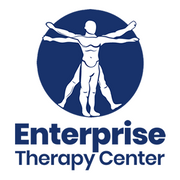What to Know About Dry Needling & Physical Therapy

Although it’s a lesser-known alternative pain management technique, physical therapists offer dry needling to treat myriad health issues. Here’s a brief introduction to the process to help you decide whether to try it.
The Basics of Dry Needling
What Is Dry Needling?
Dry needling is also known as myofascial trigger point dry needling, or simply trigger point dry needling. This unique therapy treats pain by stimulating muscle and skin around tight knots. Stress, injury, and overuse can cause tension and tightness to form in areas unreachable by massage because of their location beneath the fascia—the connective tissue that binds muscles together.
During dry needling, a professional uses a tube to guide thin, sterile needles into the skin to touch trigger points. Acupuncturists, physical therapists, chiropractors, and doctors may all perform this treatment as part of a comprehensive plan to address specific pain and health issues.
What Does It Treat?
 People use dry needling to relieve pain caused by exercise, injury, and stress, including joint trouble and whiplash.
People use dry needling to relieve pain caused by exercise, injury, and stress, including joint trouble and whiplash.
Some medical practitioners use dry needling to increase a patient’s range of motion after surgery. Others use it to manage spine and disk problems caused by work-related injuries, repetitive actions, and all-day standing.
Along with pain resulting from chronic illnesses and accidents, athletes turn to dry needling to improve their performance. This therapy can reduce myofascial pain and soreness after a race or while training for an upcoming competition. It may loosen tense muscles that negatively impact athletic performance.
If you’re interested in trying dry needling, contact Enterprise Therapy Center in Coffee County, AL, to schedule an appointment. Their licensed therapy team has over 45 years of combined experience and offers many treatment options from orthopedic and sports rehabilitation to aquatic therapy. Call them at (334) 393-7500, or visit their website to learn how you can benefit from their innovative technologies and patient-centered care.
About the Business
Have a question? Ask the experts!
Send your question

